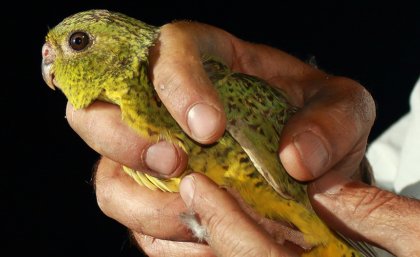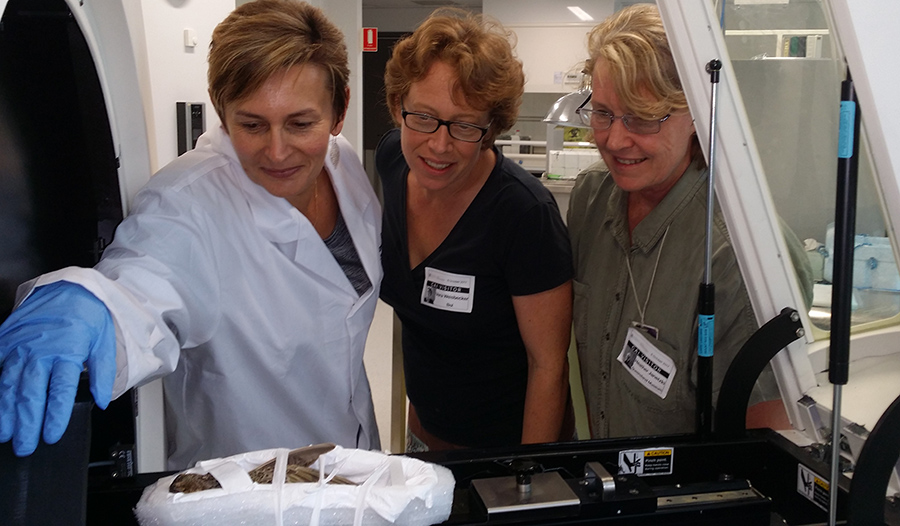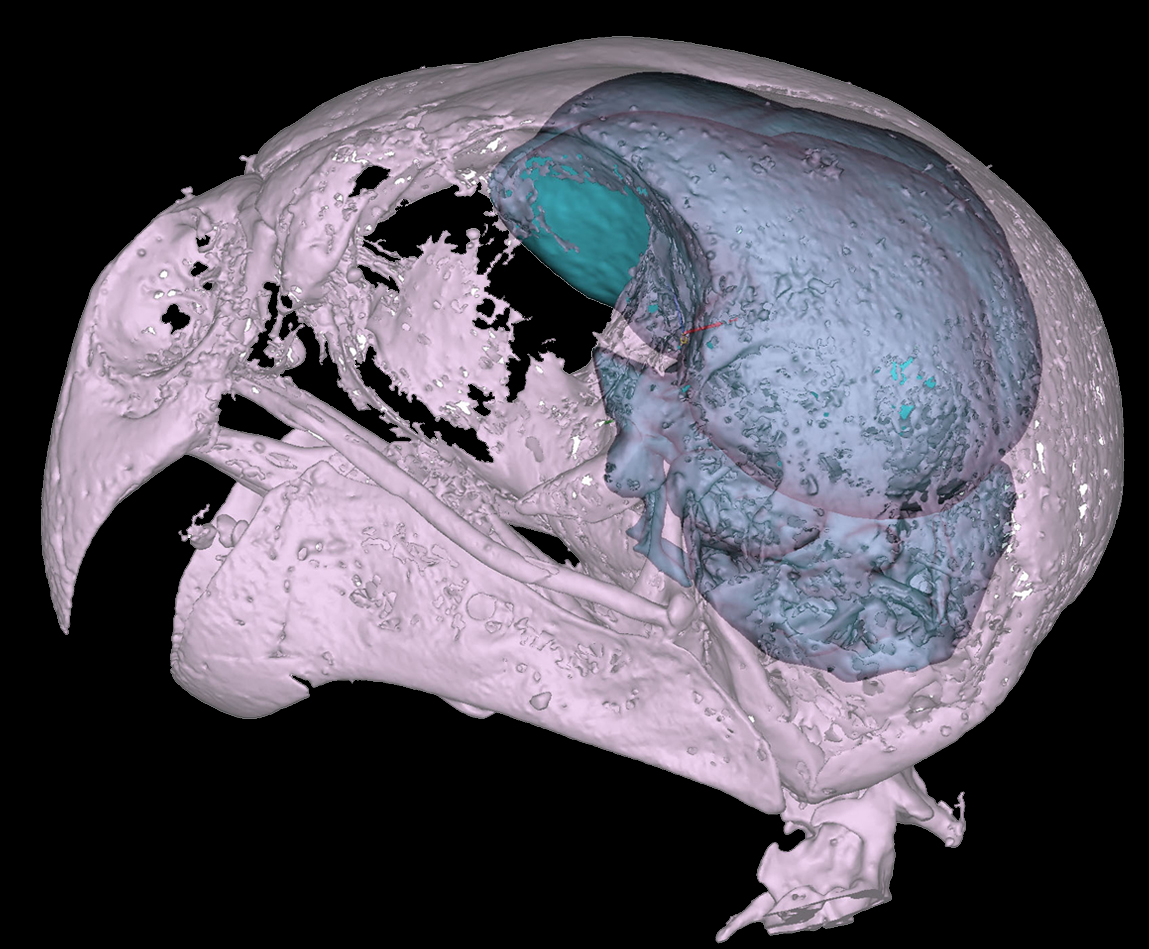
Australia’s most elusive bird, the night parrot, may not be as good at seeing in the dark as its name would suggest, and not much better at seeing in the dark than daytime active parrots.
University of Queensland researchers have co-led an international study which has revealed the critically endangered parrot’s visual system is not as well-adapted to life in the dark as would be expected for a nocturnal bird.
UQ’s Centre for Advanced Imaging and Flinder’s University researcher Dr Vera Weisbecker said the finding raised concerns the parrot might be adversely impacted by fencing in the Australian outback.
“Night parrots must be able to find their way at night – to find food, avoid obstacles while flying and escape predators,” Dr Weisbecker said.
“We therefore expect their visual system to show adaptations for seeing in the dark, similar to other nocturnal birds – frogmouths and owls with enlarged eyes for example.
“However, we found that this wasn’t the case.”
UQ’s National Imaging Facility used computed tomography to scan the then only known intact skull of the exceedingly rare species as well as skulls from related parrots.
 Co-author Aubrey Keirnan compared 3D reconstructions of the night parrot’s skull and brain with that of related parrot species.
Co-author Aubrey Keirnan compared 3D reconstructions of the night parrot’s skull and brain with that of related parrot species.
“We found that the night parrot has similar eye size to other parrots with smaller optic nerves,” Ms Keirnan said.
“It also has smaller optic lobes, which are visual processing areas in the brain.
“This suggests that the night parrot may not be great at seeing in the dark – its vision is likely sensitive but with poor resolution, so that it might not be good at distinguishing obstacles like wire fences or even predators in dark conditions.”
The findings raise questions about the night parrot’s ability to survive with low numbers in remote outback Australia where fencing is important for stock management and predator exclusion.
Dr Andrew Iwaniuk from The University of Lethbridge in Canada said the use of anatomical observations to infer the species’ behaviour was an innovative approach to understand a species so rare it was considered extinct for most of the 20th Century.
“ The species is so elusive that we do not even know how many individuals are left,” he said.
The species is so elusive that we do not even know how many individuals are left,” he said.
“To conserve the species, it is critical that we understand its behavioural needs and capabilities but these are nearly impossible to observe.”
The Queensland Museum bird collection was an important research resource with co-author and collection manager Heather Janetzki providing the night parrot specimen along with several other species for this comparative study.
Dr Weisbecker said the research team was lucky to have the specimen – found in 1990 by Australian Museum bird expert Dr Walter Boles.
“The results of the study suggest that removal of unused fences should be a priority in areas where night parrots are known to occur,” Dr Weisbecker said.
“However, we probably can’t go entirely without fences – stock needs to be managed with fences, and some forms of predator exclusion could be important for protecting the night parrot.
“We therefore need to be very careful with our fencing strategies, at least by increasing the visibility of wire fences, but alternatives such as low-tension electric fencing could be even better.”
Images above: (L-R) Dr Karine Mardon, Dr Vera Weisbecker with Queensland Museum’s Heather Janetzki getting ready to scan a night parrot specimen; An internal scan – or, endocast – of the inside of a night parrot’s head.
Video and high-resolution images are available for this story.
Media: Dr Vera Weisbecker, v.weisbecker@uq.edu.au, +61 487 385 214; Dominic Jarvis, dominic.jarvis@uq.edu.au, +61 413 334 924.
.jpg)










